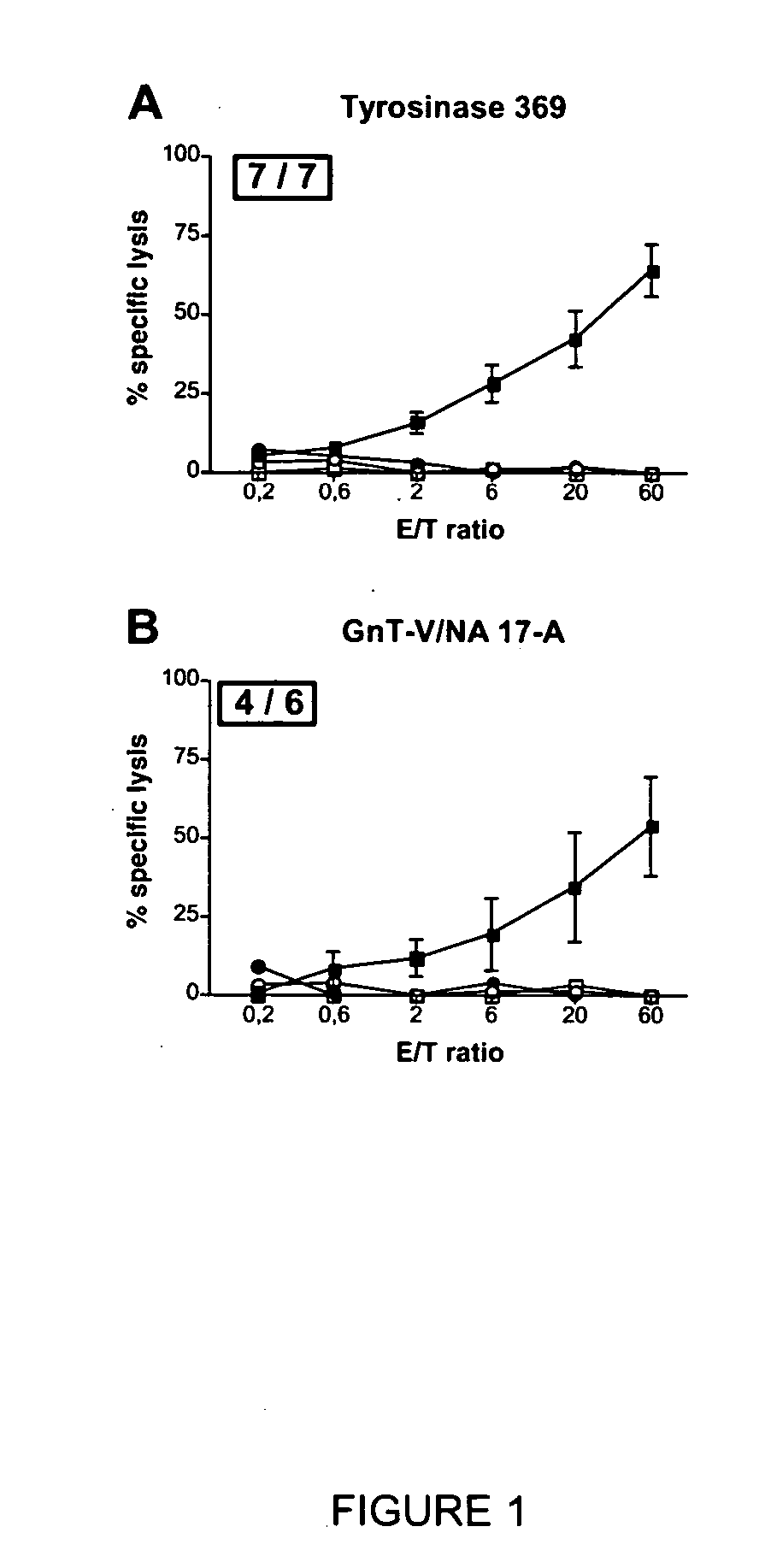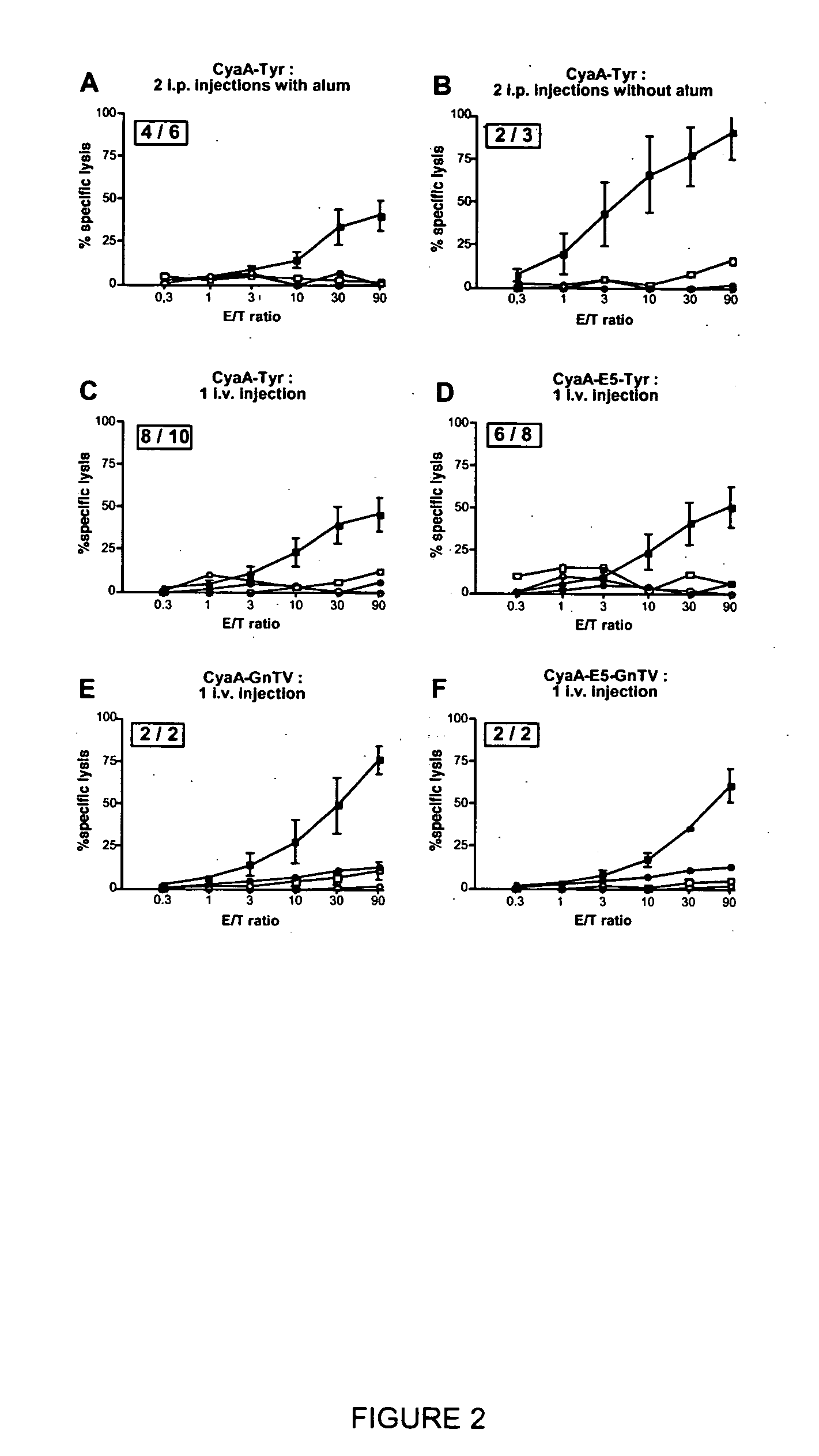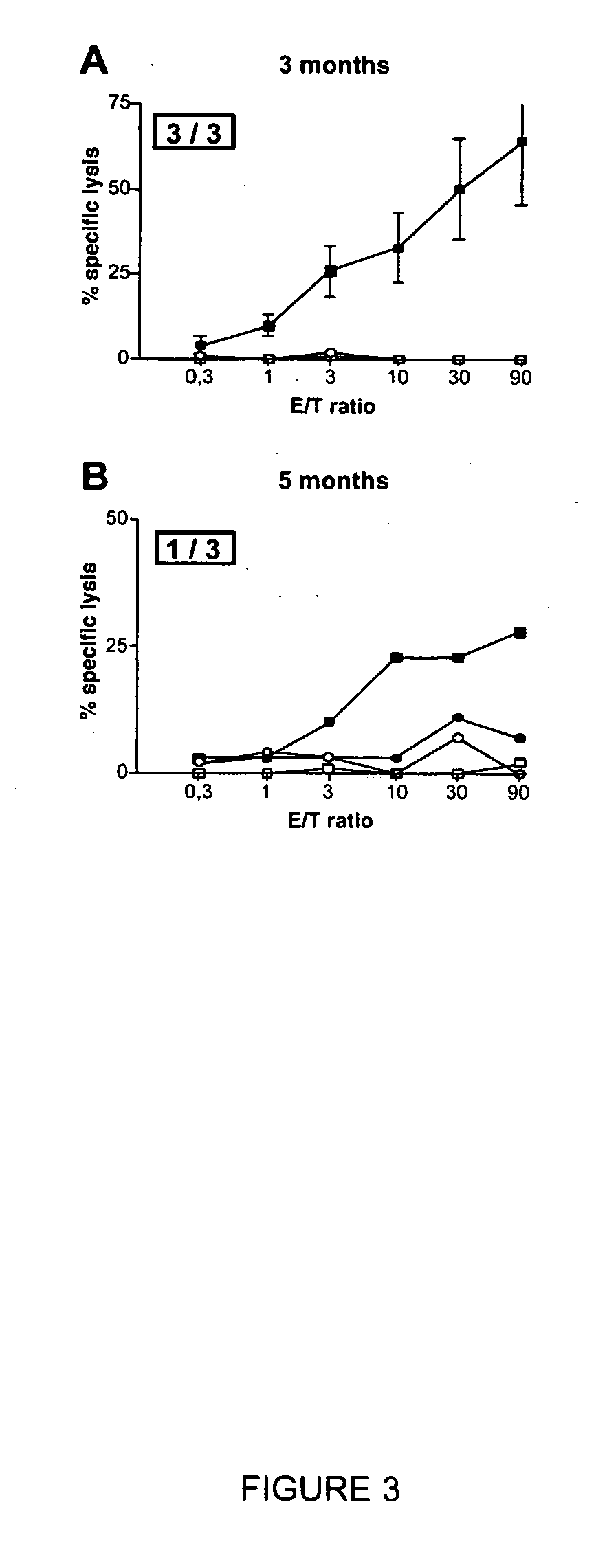Recombinant adenylate cyclase toxin of Bordetella induces T cell responses against tumoral antigens
a technology of adenylate cyclase and bordetella, which is applied in the field of recombinant adenylate cyclase toxin of bordetella, can solve the problems that the application of these approaches to human vaccination remains limited
- Summary
- Abstract
- Description
- Claims
- Application Information
AI Technical Summary
Benefits of technology
Problems solved by technology
Method used
Image
Examples
example 1
Materials and Methods
[0076] Mice. HHD mice are H-2D− / −β2m− / − double knock out mice expressing the HHD transgene comprising the α1 (H) and α2 (H) domains of HLA*0201 linked to α3 transmembrane and cytoplasmic domains of H-2 Db (D), with the α1 domain linked to human β2-microglobulin. Thus, the only MHC class I molecule expressed by the HHD mice is the modified HLA*0201 molecule (19). HHD mice were bred and housed in animal facilities of Institut Pasteur.
[0077] Peptides. The synthetic peptides pTyr (YMDGTMSQV) (SEQ ID NO: 6) corresponding to the melanoma HLA*0201 restricted epitope from the 369-377 region of tyrosinase (20, 21) and pGnT-V (VLPDVFIRC) (SEQ ID NO: 4) corresponding to the HLA*0201 restricted epitope NA17-A derived from an intron of the N-acetylglucosaminyl-transferase V gene (3) were purchased from Neosystem (Strasbourg, France).
[0078] Construction of recombinant Bordetella pertussis adenylate cyclase toxins and toxoids carrying melanoma epitopes. The recombinant CyaA...
example 2
Induction of Melanoma-Specific CTL Responses by Immunization of HHD Transgenic Mice with Recombinant CyaA Carrying HLA*0201-Restricted Melanoma Epitopes
[0089] To determine whether the CyaA toxin is capable of inducing specific CTL responses against human tumoral antigens, two recombinant CyaA carrying HLA*0201-restricted human melanoma epitopes were constructed. The first recombinant CyaA expresses the epitope 369-377 from the tyrosinase antigen (CyaA-Tyr) and the second one expresses the epitope NA17-A derived from an intron of the N-acetylglucosaminyl-transferase V (CyaA-GnT-V). The ability of recombinant CyaA to induce CTL responses against these two epitopes in vivo was assessed in HHD mice, which are transgenic for the human MHC class I molecule HLA*0201 and have been shown to develop HLA*0201-restricted CTL responses against tumoral peptides (26). HHD mice were immunized by 3 i.p. injections of 50 μg of recombinant CyaA with alum. After in vitro stimulation of splenocytes wit...
example 3
Recombinant CyaA-Tyr Induces Long Lasting Memory CTL Responses
[0092] To analyze the persistence of the CTL responses induced by the recombinant CyaA bearing melanoma epitope, HHD mice received two i.p. injections of 50 μg of CyaA-Tyr in the presence of alum. Three and five months after the last injection, splenocytes from immunized mice were stimulated in vitro over five days with the peptide pTyr and then, their cytolytic activity was tested against peptide pulsed RMA-S-HHD target cells. As illustrated in FIG. 3, CyaA-Tyr induced a long-lasting specific CTL response because specific cytotoxic activity could be detected in all mice three months after the last injection, and even after five months in one animal.
PUM
| Property | Measurement | Unit |
|---|---|---|
| Composition | aaaaa | aaaaa |
| Immunogenicity | aaaaa | aaaaa |
Abstract
Description
Claims
Application Information
 Login to View More
Login to View More - R&D
- Intellectual Property
- Life Sciences
- Materials
- Tech Scout
- Unparalleled Data Quality
- Higher Quality Content
- 60% Fewer Hallucinations
Browse by: Latest US Patents, China's latest patents, Technical Efficacy Thesaurus, Application Domain, Technology Topic, Popular Technical Reports.
© 2025 PatSnap. All rights reserved.Legal|Privacy policy|Modern Slavery Act Transparency Statement|Sitemap|About US| Contact US: help@patsnap.com



